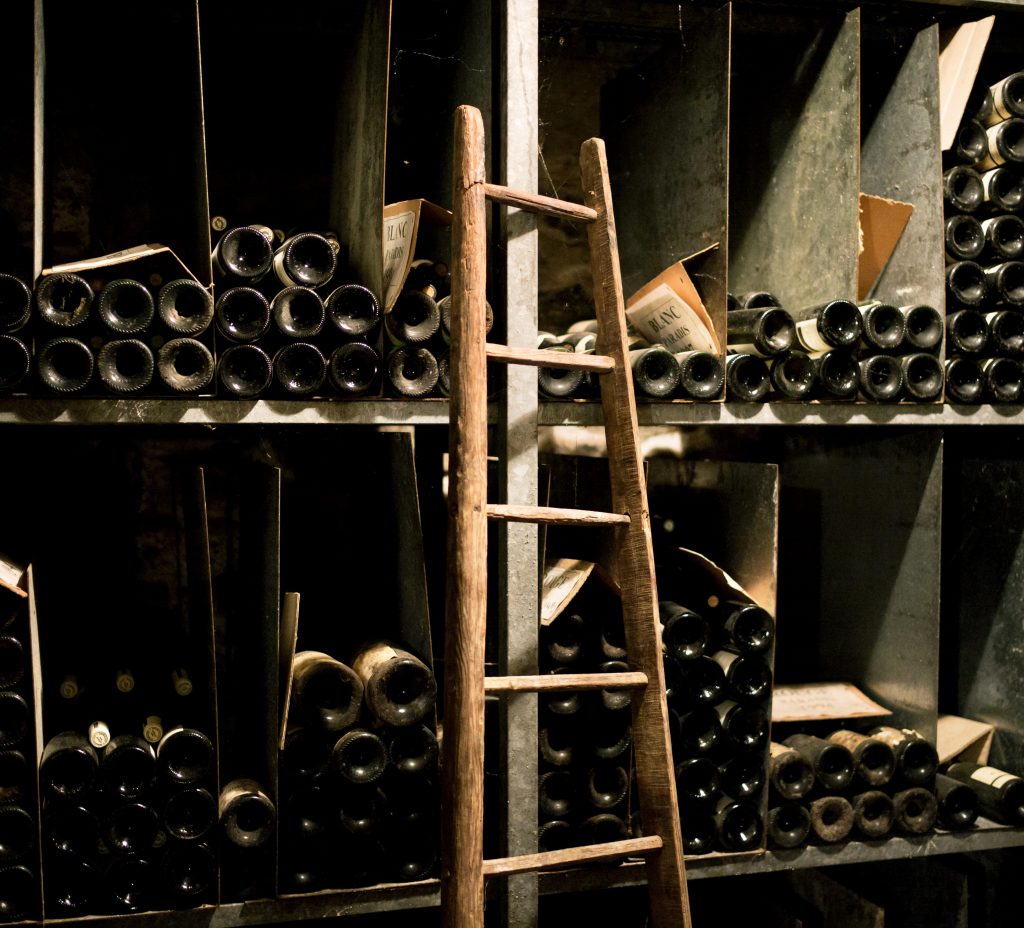Burgundy 2019: the buyer’s cellar
Author: Adam Bruntlett

As our Burgundy Buyer, Adam Bruntlett spends his days sourcing wines destined for other people’s cellars. Here, he gives us an insider’s look at his own Burgundy collection.
My relationship with Burgundy began 10 years ago, when I started visiting growers regularly to taste their wines from barrel. Some vignerons would follow the new vintage by pouring a more mature wine blind, inviting tasters to deduce the vintage and vineyard. My success on such occasions was limited, but they impressed upon me the incredible complexity of flavour that can characterise mature Burgundy.
Being in my mid-20s at the time, my limited spending power initially restricted me to odd bottles, all too often consumed shortly after purchase. But I had a strong urge to cellar some of the wines I had tasted from barrel, to watch their evolution over time. Consequently, my journey into collecting only began relatively recently.
Starting out
I first bought En Primeur with the 2012 vintage, and I still have my two purchases in my reserves: a case each of Chambolle-Musigny village and Premier Cru Les Cras from Domaine Barthod. Try as I might, I find it impossible to separate wines from the people who make them, and Ghislaine Barthod’s friendly charm is reflected in her wines. I buy them as regularly as possible; her Bourgogne is a firm favourite, with its wonderful ability to age despite its modest classification.
Buying En Primeur
Buying wine En Primeur was initially a big step, but there are many reasons why it makes sense even on a modest budget.
First and foremost, it saves money. Buying Burgundy En Primeur – even at Bourgogne or village level – can offer a substantial discount on the subsequent retail price. Early-drinking whites from the Mâconnais or Chablis tend to be shipped in the spring, so I think of buying those wines like placing an early order for my summer drinking.
Many of Burgundy’s wines are made in such small quantities that En Primeur is essential to avoid missing out on particular growers and vineyards. The parcellated nature of Burgundy’s vineyards means that in many cases, just a few hundred bottles of certain wines are made. They can be hard to find later.
Burgundy by the case
Buying En Primeur means buying by the case. Buying a full case of the same wine was a huge undertaking for me initially, but its great benefit is that you can enjoy the same wine over a period of months, years or even longer, carefully watching its evolution through its life.
For me, cellaring wine is an opportunity to leave a legacy for my children. As such, my spending increased considerably in ’17, when my first daughter was born. Helpfully, it’s also one of my favourite vintages of the last decade; I hope I will be allowed to enjoy some of them with her.
I buy a range of styles and quality levels so that I can, for example, drink my Bourgogne after a few years, then the village wines and then the Premiers Crus. This means that I should always have something that is drinking well at any given moment. I buy almost exclusively for drinking, but it’s undeniable that there can be an investment element to collecting wine – even if the aim of selling it is simply to fund more purchases.
Age-worthy wines
It’s surprising how even modest wines can age: I distinctly remember Antoine Jobard pouring a half-bottle of Bourgogne Blanc 1996 after a barrel tasting a couple of years ago. I’m proud to say I nailed the vintage – though not quite the vineyard.
To my mind, any wine which is balanced in youth possesses the ability to age well. The level of acidity and the quality of tannins, along with the concentration of fruit will determine just how long the wine can age for.
There is also an important distinction between ageing and improving: ageing in wine is rarely a linear process, and mature wines possess a completely different flavour profile to young wines. I love young Burgundy for its energy and crunchy fruit profile – typically small red berries in Pinot Noir and citrus and orchard fruits in Chardonnay. With age, the reds gain mushroom, underbrush and wild strawberry flavours; the whites often take on white truffle notes and a nutty, honeyed complexity.
Beyond the Grands Crus
Despite my privileged position as a professional Burgundy buyer, my budget doesn’t really stretch to Grands Crus. Luckily, even supposedly “modest” wines can age surprisingly well, and even improve with a few years in bottle. Two of my favourites are Sébastien Magnien’s Hautes-Côtes de Beaune Clos de la Perrière and the Bourgogne Passetoutgrains from Michel Lafarge or Jérôme Castagnier. I often try to buy large formats, which will improve the ageing capacity and limit the familiar temptation to open a bottle too young. I have quite a few magnums of Pouilly-Fuissé, Chablis and Bourgogne which I’m determined to keep for a decade before touching.
One of the most frustrating aspects of starting a cellar can be waiting for your wines to be ready. Thankfully, changing tastes and market forces mean that modern Burgundy has generally moved towards a more approachable, early-drinking style. The best winemakers – aided by recent, warm vintages which give ripe tannins and juicy fruit – can produce wines which give pleasure throughout their life. Consequently, cellaring does not just have to mean putting bottles away and forgetting about them for a decade.
Our Burgundy 2019 En Primeur offer is now live.


